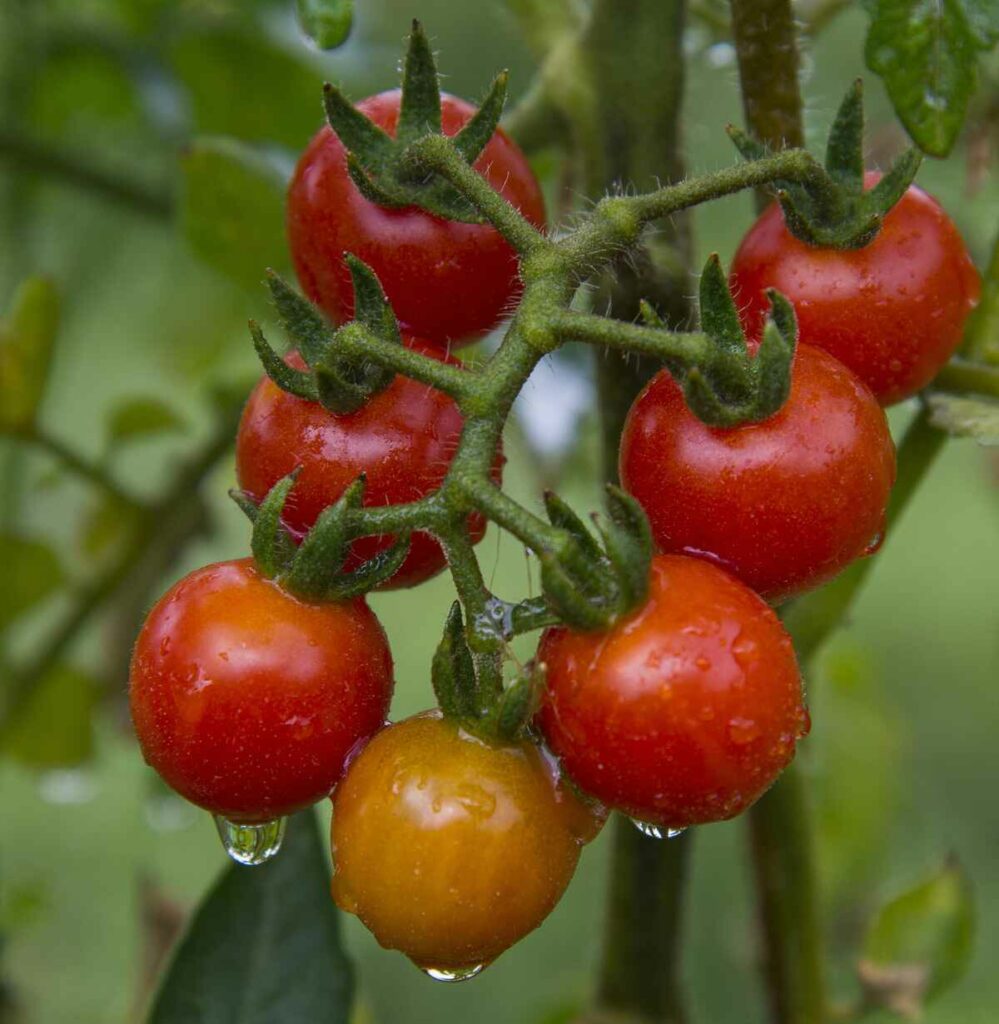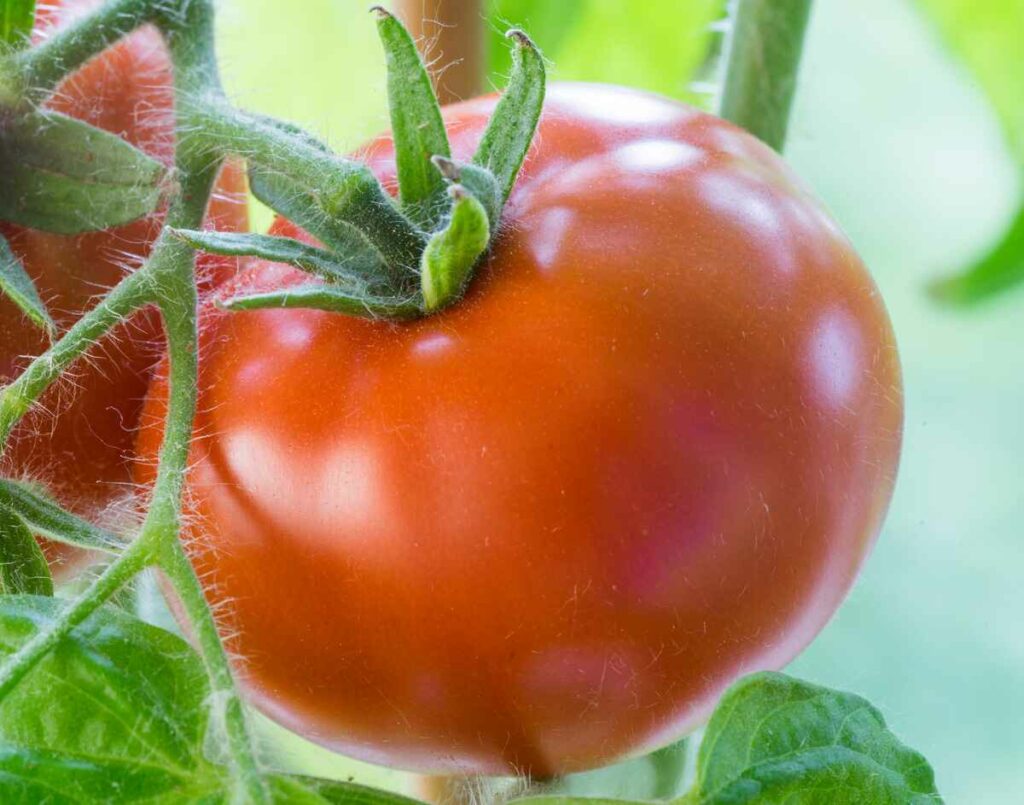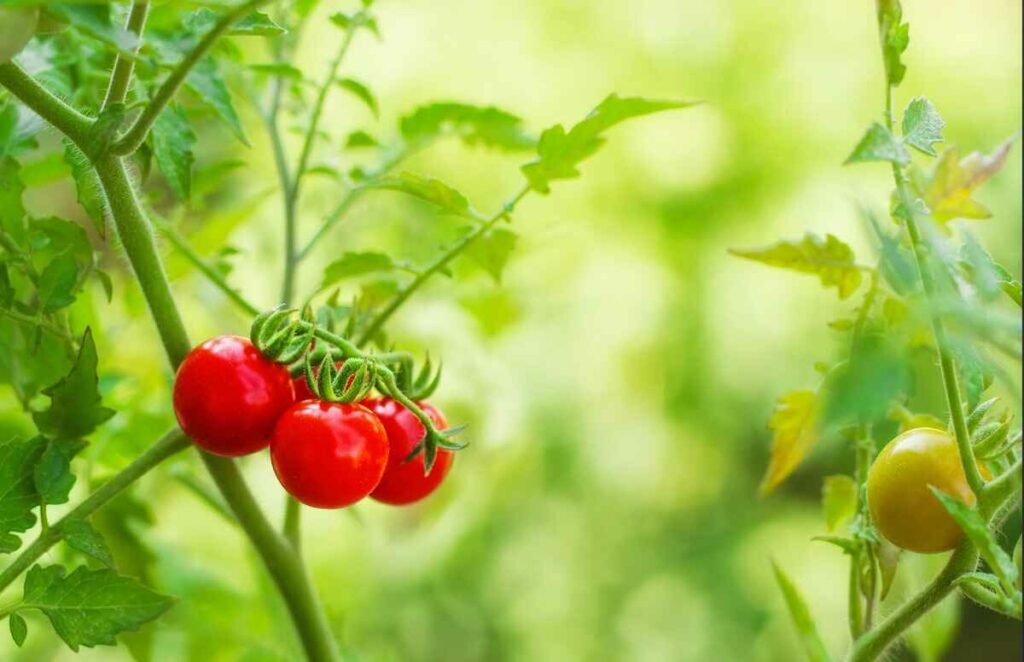If you’re a tomato grower, you know that sunlight is vital for the growth and productivity of your plants. However, not all gardeners have the luxury of providing their tomatoes with full sun exposure. You may be wondering how to grow tomatoes in indirect sunlight and if they can produce fruit under these conditions.
In this article, we will explore the truth about growing tomatoes in indirect sunlight. First, we will discuss the sunlight requirements for growing tomatoes and the factors that affect their growth. Then, we will delve into the specifics of growing tomatoes in indirect sunlight. We will examine the effects of indirect sunlight on tomato plants and whether they can still produce fruit.
Ultimately, this article will provide you with the information you need to determine whether growing tomatoes in indirect sunlight is a viable option for your garden. So, let’s get started and discover the truth about tomatoes in indirect sunlight.

Grow Tomatoes In Indirect Sunlight – Key Takeaways
- Tomatoes require full sun exposure and at least 6-8 hours of direct sunlight per day to perform well.
- When you grow tomatoes in indirect sunlight it can still provide enough light for tomatoes to survive, but they may produce fewer fruits and take longer to ripen.
- Tomatoes can be grown in containers in indirect sunlight or indoors with grow lights.
- Shade cloths or sunflowers can offer tomato plants relief from intense sunlight, and consistent moisture, well-draining soil, regular fertilization, pruning, and staking can improve tomato growth.
Growing Tomatoes: Sunlight Requirements
Tomatoes require full sun exposure, with at least 6-8 hours of direct sunlight per day. They are not shade-tolerant, so it’s crucial to ensure they get enough sun exposure to grow well.
Tomato plants convert sunlight into energy, which they need to produce fruit. This means that they grow strong and healthy when they get full sun for most of the day. However, too much sunlight during a dry spell can make tomato plants thirsty and slow down fruit-bearing.
To give your tomatoes the best chance of success, make sure they get plenty of direct sunlight and regular watering.

Factors Affecting Tomato Growth
Understanding the factors that impact tomato growth is essential for producing a healthy and bountiful crop. In addition to sunlight, other factors that affect tomato growth include pruning techniques and soil preparation.
Pruning helps remove diseased or damaged branches and promotes good air circulation, resulting in better growth and fewer diseases. Soil preparation is also critical in ensuring the plants have access to the necessary nutrients and moisture.
When it comes to indirect sunlight, tomatoes can grow, but the quality and quantity of the fruits may be affected. Indirect sunlight can come from reflected light or filtered light, but it may not be enough to produce a bountiful crop. When you grow tomatoes in indirect sunlight it may take them longer to ripen, and the fruits may not reach their full potential. However, with proper care, such as consistent moisture and fertilization, tomatoes can still thrive in indirect sunlight.
Pruning techniques, like removing suckers, and a well draining soil can also help maximize the growth and productivity of tomato plants, regardless of the amount of sunlight they receive.

Tomatoes in Indirect Sunlight
Container gardening is a great option for growing tomatoes in indirect sunlight. You can control the amount of sunlight the plant receives by moving the container around to different locations throughout the day.
Additionally, artificial lighting can be used to supplement the lack of natural sunlight. LED grow lights are recommended, as they emit the right spectrum of light for plant growth and can be adjusted to mimic natural sunlight.
With proper care and attention, you can still grow healthy and tasty tomatoes even in less than optimal sunlight conditions.
| Factors to Consider | Techniques to Implement |
|---|---|
| Consistent moisture | Water regularly, use self-watering containers |
| Fertilization | Use a balanced fertilizer and apply according to instructions |
| Pruning techniques | Remove suckers and lower leaves to improve airflow and light exposure |
| Soil preparation | Use well-draining soil and add compost or organic matter for nutrients |
FAQ About How To Grow Tomatoes In Indirect Sunlight
Can tomato plants survive in areas with limited sunlight?
If your area has limited sunlight, your tomato plants can survive, but their growth may be stunted. This is because tomato plant growth heavily relies on photosynthesis, which requires sufficient sunlight to produce energy.
Without enough sunlight, your tomato plants may struggle to produce healthy leaves and fruits.
Keep in mind that the quality and quantity of your tomato fruits may be affected by the limited sunlight, and they may take longer to ripen. Therefore, it’s best to provide your tomato plants with as much sunlight as possible for optimal growth and yield.
Should tomato plants be watered differently when grown in indirect sunlight?
To grow tomatoes in indirect sunlight, you should pay attention to their watering techniques and soil composition. While indirect sunlight can still provide enough light for tomatoes to thrive, the quality and quantity of the fruits may be affected. Therefore, it’s important to ensure that the soil is well-draining and rich in nutrients to support the plant’s growth.
You should also make sure to water the plants consistently to keep the soil moist. However, be careful not to overwater, as this can lead to root rot. By using the right watering techniques and soil composition, you can help your tomato plants grow and produce healthy fruits even in indirect sunlight.
Are there any specific nutrients that tomato plants need when grown in indirect sunlight?
When growing tomato plants in indirect sunlight, it’s important to provide them with the proper soil nutrients and fertilizer requirements.
These plants require well-draining soil that’s rich in nutrients such as nitrogen, phosphorus, and potassium.
Regular fertilization is essential to keep the plants healthy and productive.
While indirect sunlight can still provide enough light for the plants to thrive, it may result in fewer fruits and a longer ripening period.
Therefore, it’s crucial to provide the plants with the necessary soil nutrients and fertilizer requirements to ensure their optimal growth and yield.
How does the taste of tomatoes grown in indirect sunlight compare to those grown in direct sunlight?
When comparing the flavor of tomatoes grown in indirect sunlight to those grown in direct sunlight, there may be noticeable differences. Tomatoes grown in direct sunlight tend to have a higher sugar content and better flavor due to the abundance of energy they receive from the sun.
Tomatoes grown in indirect sunlight may take longer to ripen and may produce fewer fruits, which can affect their taste. Additionally, harvesting time may also play a role in the flavor comparison as tomatoes that are picked when fully ripe tend to have a sweeter taste regardless of the sunlight exposure.
Overall, while tomatoes can grow in indirect sunlight, their flavor may not be as optimal as those grown in direct sunlight.
Can tomato plants be grown successfully in shaded areas with artificial lighting?
You can successfully grow tomato plants in shaded areas with the use of artificial lighting.
The key is to provide the plants with the necessary amount of light, nutrients, and water. With the right setup, you can create an environment that mimics ideal growing conditions for tomato plants.
The use of grow lights allows you to control the amount and duration of light exposure, ensuring that the plants get the required 6-8 hours of light per day.
Will You Grow Tomatoes In Indirect Sunlight?
Now that you’ve explored the truth about growing tomatoes in indirect sunlight, you have a better understanding of whether they can grow and produce fruit in these conditions.
As we’ve learned, tomatoes require a significant amount of sunlight to thrive, but they can still grow in indirect sunlight if certain conditions are met.
Factors such as the intensity and duration of sunlight, as well as the quality of the soil and water, can affect the growth and productivity of tomato plants.
Therefore, if you’re considering growing tomatoes in indirect sunlight, it’s important to ensure that the plants receive enough light and nutrients to support their growth.
With proper care and attention, you can successfully grow tomatoes in indirect sunlight and enjoy a bountiful harvest.